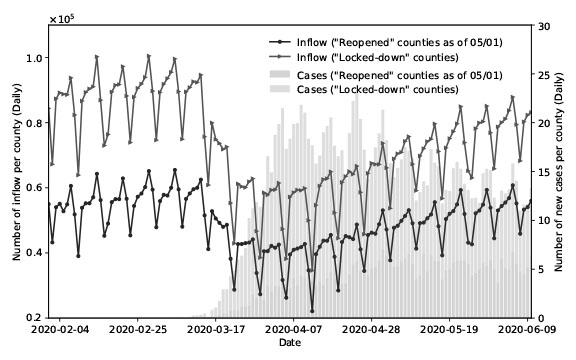UMD Research Sheds Light on Holiday Travel and COVID
During major holidays in 2020, Americans traveled by the thousands to visit loved ones or just to get away. Although many took precautions, such as limiting indoor gatherings and wearing masks, epidemiologists cautioned that the holiday influx could lead to more COVID-19 cases—and undermine efforts to contain the virus. A new study led by Chenfeng Xiong, UMD assistant research professor of civil and environmental engineering and assistant director of the Maryland Transportation Institute, shows those concerns were well-founded. Data analyzed by his team indicates that when people traveled to other counties or states, COVID-19 case numbers went up at the destinations they traveled to.
“The more people travel, especially during the summer and winter holidays, the more they contribute to higher case numbers in their destination counties," he said. Xiong’s research draws from data available on the University of Maryland’s COVID-19 Impact Analysis Platform, which pulls together aggregated mobile phone data and runs the numbers through computer algorithms to produce a broad set of metrics about pandemic trends, including mobility trends. While the platform records both short and long-distance travel, it was the latter than interested Xiong for purposes of this study. The team now plans to extend the work further, looking at equity issues related to the pandemic and how socioeconomic conditions, including poverty, factor into the trends. The researchers also plan to analyze different modes of transportation, such as air travel versus driving, to determine the comparative level of risk. Though the arrival of vaccines has raised hopes that the year-long public health crisis may be nearing its end, Xiong and colleagues warn that we’re not out of the woods yet. “Even in a best-case scenario, it will still be many months before we return to normal,” he said. “And the impacts will be felt for a long time to come.” The team, which also includes MTI Co-Director Lei Zhang and students Songhua Hu, Weiyu Luo, and Mofeng Yang, has published a paper on their work in the Proceedings of the National Academy of Sciences (PNAS). In addition, Xiong and his team have published a paper in the Journal of the Royal Society Interface on the impact of state-level stay-at-home orders in the U.S., finding these had little impact on mobility behavior.
Related Articles: February 17, 2021 Prev Next |
|



 “We found a relationship between travel behavior and growth in the number of cases in counties across the United States,” Xiong said. “Not only did we see a statistically significant relationship, but the relationship becomes progressively stronger over time—especially during the holiday period."
“We found a relationship between travel behavior and growth in the number of cases in counties across the United States,” Xiong said. “Not only did we see a statistically significant relationship, but the relationship becomes progressively stronger over time—especially during the holiday period."